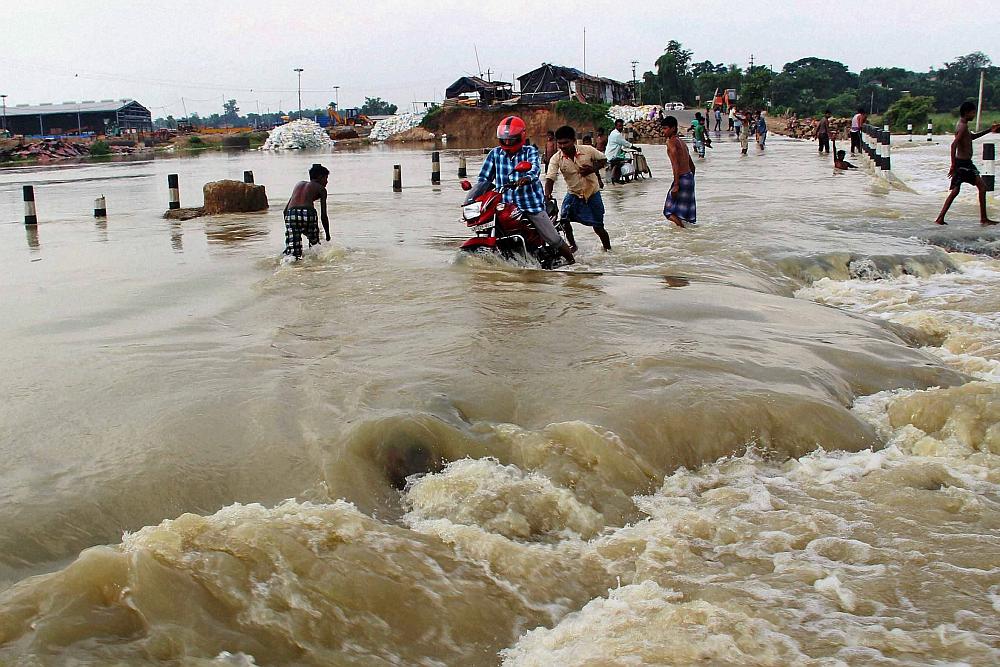Recent catastrophic floods in Teesta have plunged communities into turmoil, resulting in a profound loss of life, infrastructure, and hope. As we grieve for the 22 confirmed fatalities and more than 100 people still missing, it is crucial that we not only respond to the immediate crisis but also reflect on the underlying causes and long-term consequences of this disaster.
The scale of the destruction is staggering, with thousands displaced, Eleven bridges have been washed away, infrastructure in ruins, and communication lines severed. To compound matters, unexploded munitions in floodwaters have added an ominous layer of danger to the already dire situation. As we extend our support to the affected, we must address the impending challenges and acknowledge the potential for lasting repercussions.
The most insidious threat is the potential for disease outbreaks. Stagnant pools of contaminated water left behind by receding floodwaters can become breeding grounds for mosquitoes and bacteria, increasing the risk of insect- and water-borne diseases. Exposure to contaminated water from industrial sites, sewer systems, and septic tanks poses a significant health threat.
One pressing issue that has come to the forefront is the role of infrastructure projects, such as the 1200 MW Teesta Stage III hydel power project. Activists assert that this dam may have worsened the flooding, prompting us to examine the complex relationship between large-scale dams and natural disasters. Dams, like Teesta Stage III, are often hailed as solutions for clean energy and economic development. Nevertheless, they can alter wild river flow, trap sediment, induce seismic activity, and disrupt ecosystems. These factors can exacerbate flood risks, especially in regions prone to heavy rainfall and landslides, like Sikkim and West Bengal.
To address these concerns, we must prioritize a multi-faceted approach:
- Environmental Impact Assessment (EIA): Rigorous EIAs in the Himalayan region must be conducted before initiating infrastructure projects. These assessments should thoroughly evaluate potential downstream impacts, including flood risk, ecological disturbances, and seismic activity. Transparency in the EIA process is crucial, allowing communities to voice their concerns and consider alternatives.
- Mitigation Strategies: Infrastructure projects should include comprehensive risk mitigation strategies, including establishing contingency plans for managing reservoir levels during heavy rainfall, ensuring the safe release of water, and safeguarding against the build-up of sediment that can reduce a river’s capacity to handle heavy rains.
- Community Involvement: In decision-making, local communities’ and activists’ concerns and perspectives should be considered. Public consultations and community engagement can lead to more responsible and sustainable infrastructure development.
- Disaster Preparedness: Authorities must invest in disaster preparedness and early warning systems. Upgrading stormwater drainage systems and reinforcing critical infrastructure can help reduce the impact of future disasters.
- Climate Change Adaptation: Given extreme weather events’ increasing frequency and severity, we must adapt and protect vulnerable communities. Climate-resilient infrastructure and policies should be prioritized. Upgrading stormwater drainage systems, reinforcing critical infrastructure, and establishing early warning systems can help reduce the impact of future disasters. Climate change is making extreme weather events more frequent and severe, and it is our collective responsibility to adapt and protect vulnerable communities.
The floods in Sikkim and West Bengal are a stark reminder of the urgent need for disaster resilience and response strategies. In the wake of this tragedy, we must unite as government agencies, non-governmental organizations, and communities to provide immediate relief and long-term recovery efforts. Ensuring access to clean water, shelter, medical care, and mental health support for survivors is paramount. In times of crisis, our unity, compassion, and commitment to responsible development can bring hope amidst the darkest days.
